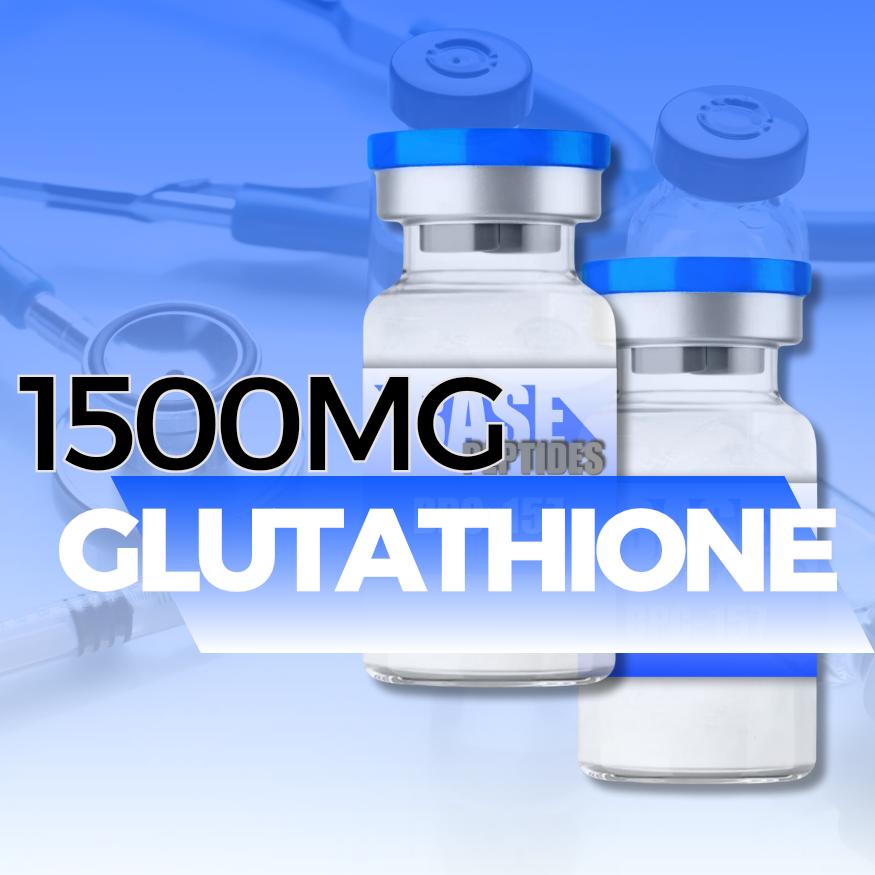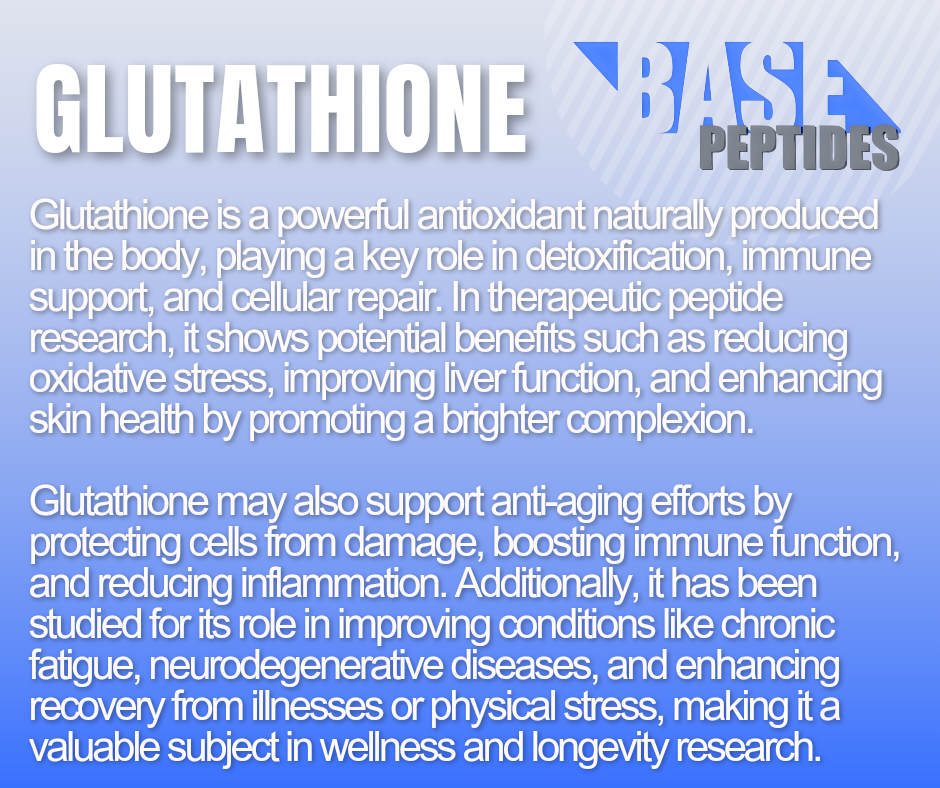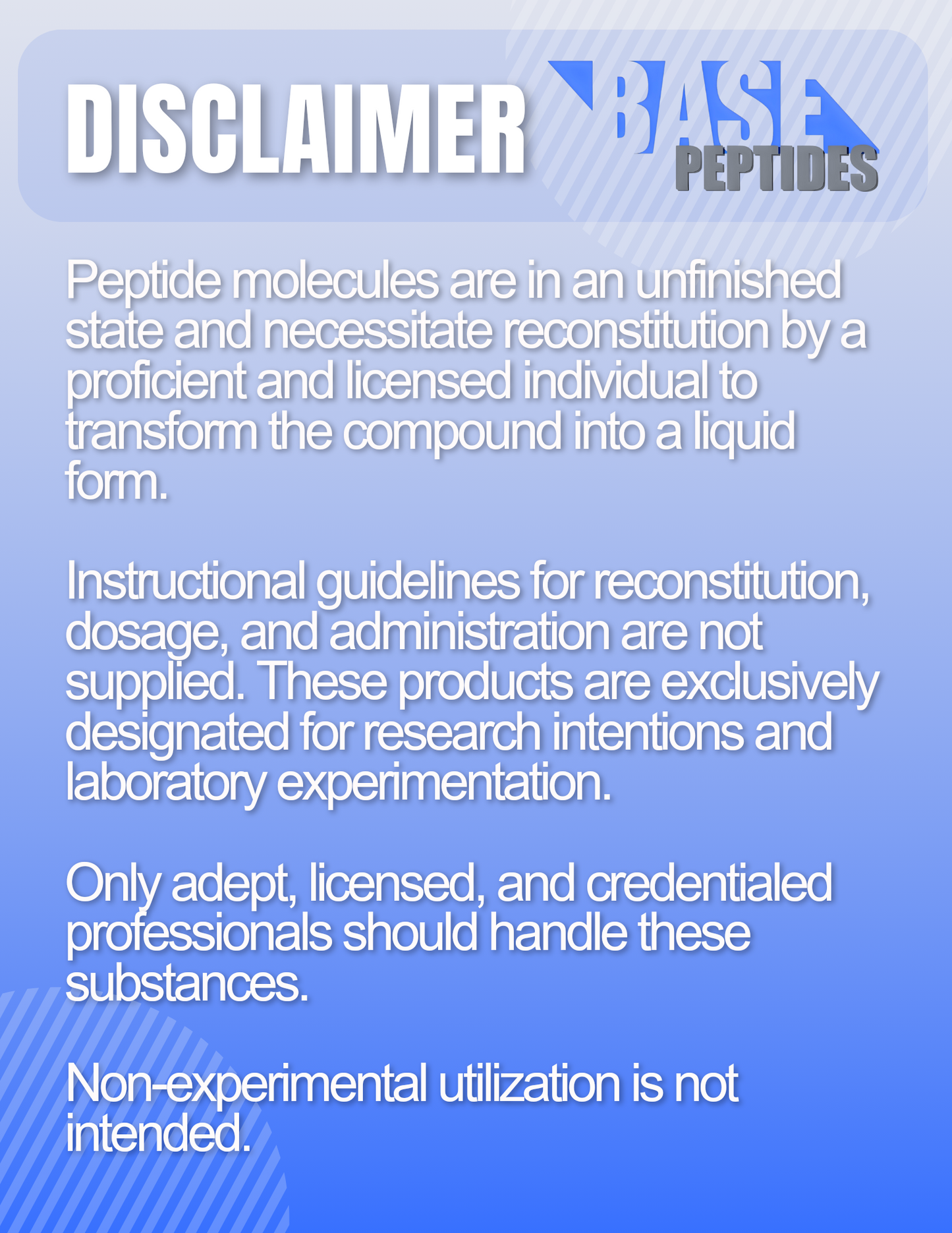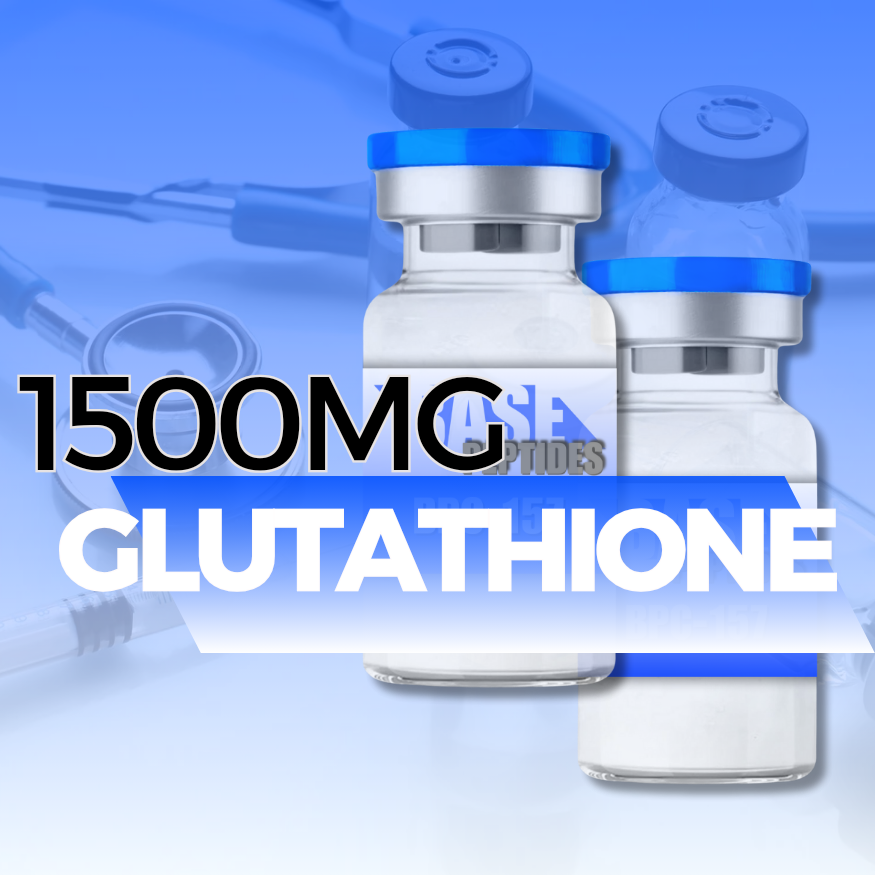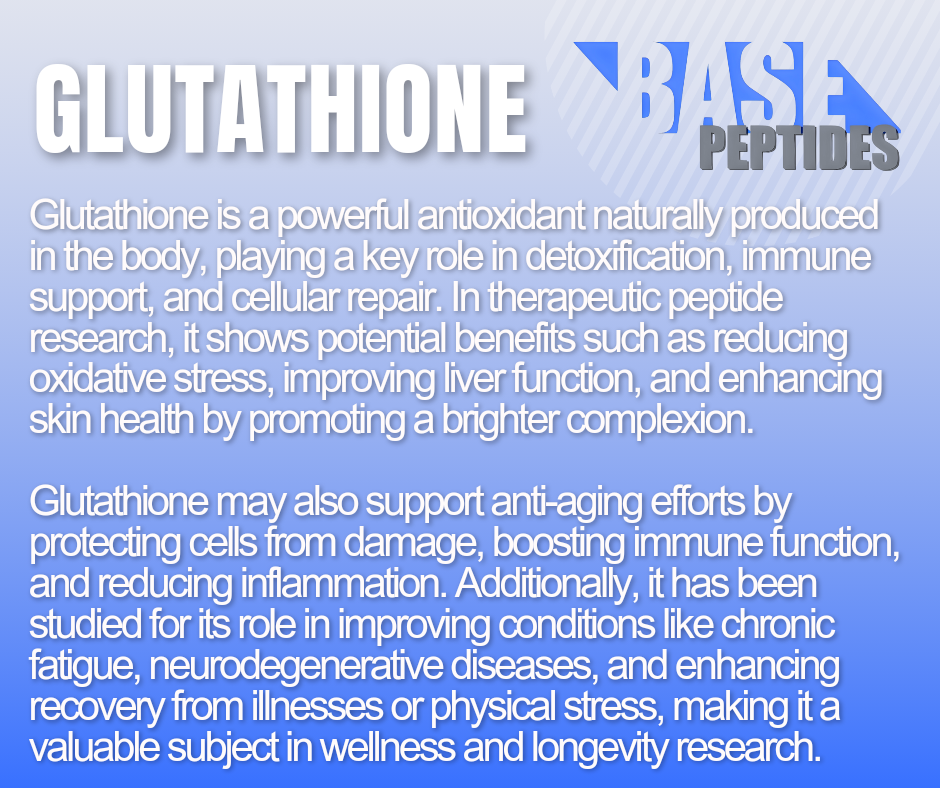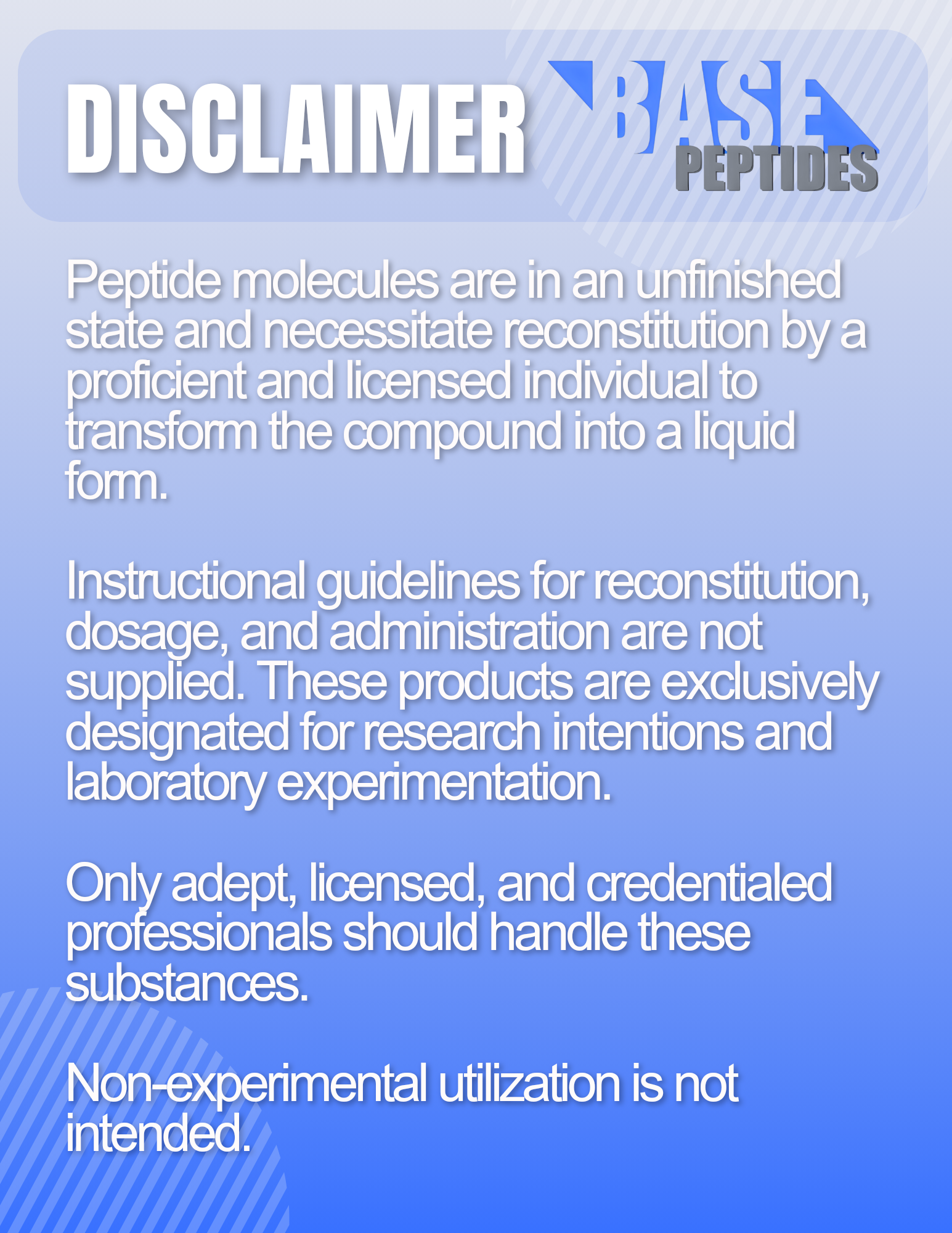Glutathione
Glutathione
Base Peptides are intended for licensed medical professionals and experienced researchers. Reconstitution required. Dosing and use instructions are not provided.
Couldn't load pickup availability
Glutathione (GSH) — γ-L-Glu-L-Cys-Gly Tripeptide • Reduced Form
Glutathione (GSH) is a ubiquitous intracellular antioxidant tripeptide—γ-glutamyl-cysteinyl-glycine. It maintains cellular redox balance, supports detoxification via conjugation chemistry, and fuels enzymatic defenses such as glutathione peroxidase and glutathione S-transferases.
- Synonyms: L-Glutathione (reduced); GSH
- CAS No.: 70-18-8
- Formula / MW: C10H17N3O6S • ~307.32 g·mol⁻¹
- Class: Endogenous antioxidant; phase-II conjugate donor
- Redox buffer: GSH neutralizes peroxides (via glutathione peroxidase), forming GSSG which is recycled back to GSH by glutathione reductase using NADPH.
- Detox chemistry: Conjugates electrophiles/xenobiotics via glutathione S-transferases, aiding cellular clearance.
- Protein protection: Maintains thiol status of proteins; the GSH:GSSG ratio is a standard readout of oxidative stress.
- To modulate/measure oxidative stress and redox signaling pathways.
- To study detoxification capacity and xenobiotic metabolism.
- To probe immune function, mitochondrial resilience, and thiol-based signaling.
Key Study Themes — What’s Typically Observed
Oxidative Stress & Redox Biology
- Endpoints: GSH, GSSG, GSH:GSSG ratio, GPx/GR activity, ROS, lipid peroxidation.
- Typical findings: Higher intracellular GSH and favorable GSH:GSSG ratios align with improved resistance to oxidative insults (model-dependent).
Detoxification & Conjugation
- Endpoints: GST activity, adduct formation/clearance, Phase-II metabolism panels.
- Typical findings: Enhanced clearance of reactive electrophiles and reduced protein/DNA adduct burden in vitro/in vivo models.
Mitochondrial & Immune Readouts
- Endpoints: Mitochondrial membrane potential, ATP, cytokines, T-cell function, thiol redox.
- Typical findings: Improved mitochondrial redox tone and modulation of inflammatory markers (design-dependent).
Potential Research Applications
Redox & Aging Biology
- Senescence/ROS assays, proteome thiol protection, lipid peroxidation models.
Detox & Xenobiotics
- Phase-II metabolism, electrophile stress, environmental toxicology.
Mitochondrial & Immune Health
- NADPH coupling, cytokine modulation, infection/inflammation stress tests.
Synergistic / Comparator Compounds
N-Acetyl-L-Cysteine (NAC)
- Why pair: Cysteine donor for endogenous GSH synthesis; complements direct GSH provision.
Vitamin C & Alpha-Lipoic Acid
- Why pair: Antioxidant network recycling (ascorbate ↔ glutathione; lipoic/di-hydrolipoic redox couple).
Glycine / Serine
- Why pair: Substrates for GSH synthesis and one-carbon metabolism interplay.
What’s in the Vial (Editable)
| Active | Per Vial | Grade / Purity |
|---|---|---|
| Glutathione (Reduced, GSH) | 500 mg (set per SKU) | Research-grade, ≥ 98–99% (HPLC/MS) |
| Appearance | White to off-white powder; sulfurous odor possible (cysteine thiol) | |
| Solubility | Water-soluble; prepare fresh solution for lab use | |
Specifications & Handling
- Form: Lyophilized powder or capsules (lot-coded)
- Storage: ≤ −20 °C long-term; protect from light and metal contamination
- Stability: Oxidizes to GSSG with heat/air/light; consider inert atmosphere and chelators (e.g., EDTA) in sensitive assays
- Reconstitution (lab use): Use freshly prepared, pH-buffered aqueous media (near neutral); minimize repeated freeze–thaw.
- Labeling: Research Use Only; CAS/lot/SKU and expiration clearly displayed.
Known Concerns (Context)
- Chemical lability: Susceptible to oxidation; handle quickly, cold, and protected from light/metals.
- Assay interference: Thiol chemistry may affect metal-dependent enzymes and redox-sensitive dyes—validate controls.
- General: For laboratory research use only; not for human consumption or therapeutic/veterinary use.
Regulatory & Use Notice
Sold for laboratory research use only. Not for human consumption, medical, or veterinary use. No human-use instructions are provided. Buyer is responsible for safe handling and regulatory compliance.
Glutathione (GSH) Research | Reduced Glutathione Tripeptide | Antioxidant, Detox & Redox Biology Studies
